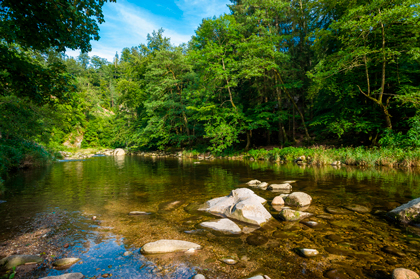Twenty-somethings are in the stage of life known as “emerging adulthood.” It is an interesting phase of life, filled with lots of novelty, transitions, uncertainty and big choices.
Emerging adulthood is a great time of life to develop a mindfulness practice. Mindfulness—the art of paying attention, without judgment, to your experience in the moment—can help manage the stress inherent in change and uncertainty. Perhaps more importantly, it promotes the development of insight and wisdom that guide important life decisions.
If you are a young adult and want to learn a bit of mindfulness, these tips can help you get started.
1. Be willing to be curious about mindfulness.
“Yeah, that’s not really my thing,” is what I sometimes hear when I talk to a twenty-something about mindfulness. If you find you are a bit skeptical about whether learning mindfulness will be worth your time, you are in good company. Many of the college and graduate students I teach at Duke are at first. But those same skeptical students often later tell me how useful they found it. I invite you to acknowledge your skepticism and at the same time, allow yourself to be curious about what might happen if you explore it a little bit.
2. Remember that it takes practice.
It is crucial to understand that mindfulness meditation is not an innate talent, but rather a skill like juggling or playing the kazoo. Anyone can learn it, but it takes practice, and you practice by meditating.
Like learning to lift weights, you start small and work up to the heavier stuff. For mindfulness practice, 10 minutes of meditation in a quiet room is a reasonably light weight. A heavier weight is staying centered when your computer crashes or you fight with your roommate. We practice with the lighter weights so we are ready when life hands us a heavy one. To get started, try one of these short, guided meditations.
3. Stop trying to stop thoughts.
If you try to stop your thoughts when you meditate, you will fail, hate it and quit. So don’t do it. Don’t try to stop your thoughts; you won’t be able to. Your thoughts, like a rushing river, never stop. Note this: when you meditate you are not trying to dam your river of thought. Instead, you are trying to climb out of the river, sit on the bank, and watch the thoughts go by. To climb out of the river, you simply (but not easily) direct your attention towards the sensation of your breath moving in and out of your body. This anchors your awareness in the present moment, which pulls you out of the river. You’ll quickly see that it feels different to be on the bank watching the thoughts flow rather than in the river, carried off by the current.

4. Judge not your judgments.
As you learn to watch your river of thought, you will notice that it is filled with lots of judgment and criticism, both of yourself and others. Maybe you’ll first notice judgments about the meditation practice: my mind wanders so much, I’m really bad at this or I like how relaxed I’m feeling. If you keep watching you’ll notice judgments about just about everything you do or say, not to mention judgments about everyone else’s behavior. The trick is to see these judgments, and learn to release them without buying into them. This takes practice, but over time it sows the seeds of self-compassion and empathy, essential components of a fulfilling life.
5. Keep in mind that it doesn’t take forever.
As little as ten minutes a day of meditation practice over four weeks can help you feel less stressed, sleep better, be more mindful and feel more self-compassion. But you don’t have to believe me. Try it yourself. You can use our Koru Mindfulness app to track your progress.
Holly Rogers MD, is a psychiatrist and mindfulness teacher at Duke University’s student counseling center. Along with Margaret Maytan, MD, she developed Koru Mindfulness, the only evidence-based mindfulness training program designed specifically for college-age adults. She is the author of The Mindful Twenty-Something.



 2024 Peace Playbook: 3 Tactics to Avoid Clashes with Your Partner
2024 Peace Playbook: 3 Tactics to Avoid Clashes with Your Partner